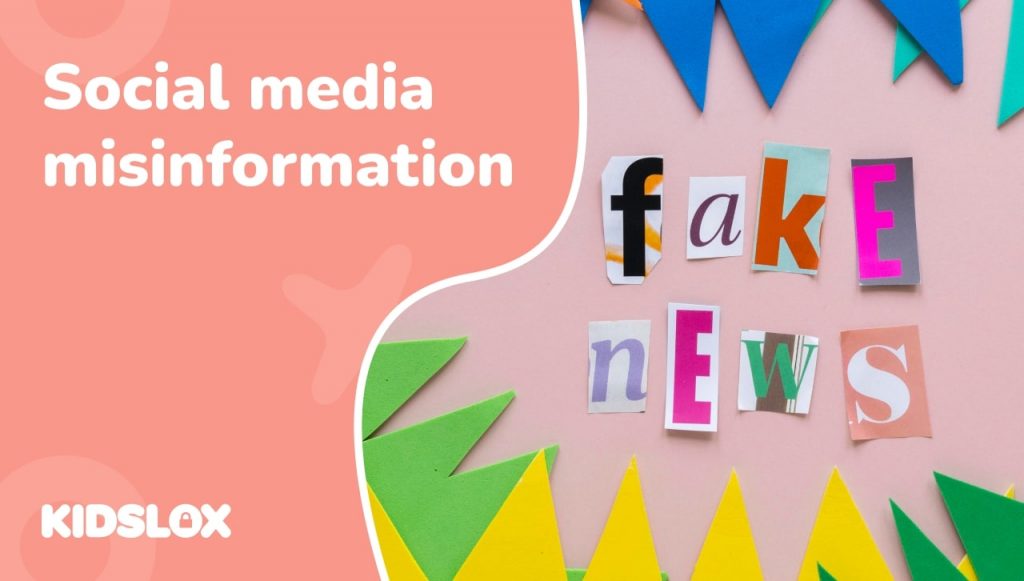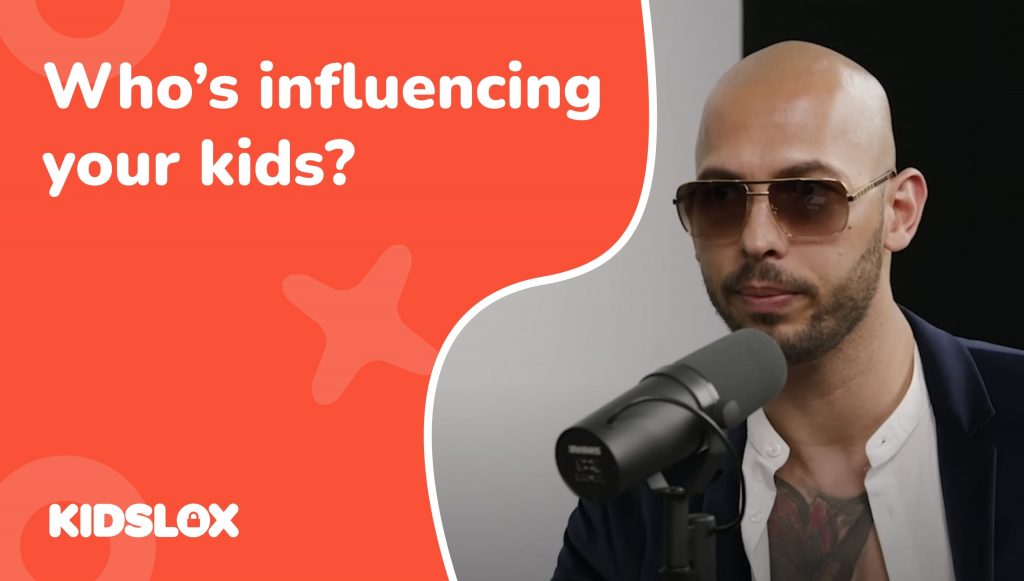There’s never been a more digitally connected generation on earth. Within three decades, we’ve gone from the internet being a luxury to something available to virtually everyone everywhere – a world of information and connection within the palm of our hands.
Social media networks are the most profound of all the uses the internet has given the world. From Facebook and Instagram to Snapchat and TikTok, these online communities have gone from novelty to absolute necessity. And for teens and children, these networks often form the foundation of their social lives.
But there’s a dark side to it all. With so much information at our fingertips, it can sometimes be difficult to differentiate between fact and fiction – especially for younger users. Misinformation and “fake news” on social media is everywhere, and teens are particularly vulnerable. And with the rise of AI and bots, it can be even more difficult to tell what’s real and what’s not.
Whether you are a parent, guardian, teacher, or mentor, there are proactive steps you can take to help teens learn how to navigate a world of misinformation – and discover how to become responsible digital citizens. Let’s look at misinformation as a whole and some recent misinformation examples that showcase the real danger our teens face.
What is Misinformation? Misinformation vs Disinformation
So what is misinformation? After all, in a time when everyone can be a citizen-journalist, data, and experience can often be subjective to those who are sharing it. But is an incorrect opinion truly fake news?
Generally, misinformation is false or inaccurate information deliberately spread to deceive people. It can be in the form of digital media (e.g., articles, videos, or photos) from unreliable sources, as well as rumors and gossip on various platforms like WhatsApp and social networks like Twitter and Facebook.
The key difference between misinformation and incorrect information is that misinformation seeks to do harm to its readers. It can be used to manipulate opinions, spread hatred, and incite violence – just as easily as it is used to propagate the truth.
And with over 5.6 billion daily internet users, false information finds a rapid and expansive outlet. The impact of misinformation is far-reaching, affecting political, health, and social landscapes significantly – and the impacts can be difficult to reverse.
Misinformation vs Disinformation: What’s the Difference?
It’s important to understand the differences between misinformation and disinformation. Misinformation is false or inaccurate information that spreads without malicious intent. It’s often shared unknowingly, with people believing it to be true.
Disinformation, on the other hand, is a deliberate attempt to spread false information in order to deceive or manipulate people into believing something untrue. It’s typically spread with malicious intent. However, the two often become intertwined as viral misinformation becomes a lucrative tool for those looking to spread disinformation.
How Does Misinformation Spread So Easily?
Various factors contribute to the spread of misinformation – each of which plays a role in why this particular type of false information is so pervasive.
1. Misinformation Can Be Published With A Single Click
Consider the sheer number of users who can access information online. Any user can publish content on the internet, regardless of whether or not it is true. This means users can spread false information with ease and without consequence – as long as it serves their agenda.
Some have no agenda other than to sow confusion and chaos, contributing to the spread of misinformation. One of the many recent misinformation examples comes from a 2022 TikTok video alleging Disney World was lowering the on-site drinking age to 18.
The video quickly gained traction, amassing millions of views in just a few days and spreading across various social media platforms like Facebook, Instagram, and Twitter. It wasn’t long before the narrative was picked up by ABC 10 News, further fueling the discussion.
The misinformation could be traced to a blog post on Mouse Trap News titled “Drinking Age at Disney World May be Lowered to 18.” While no authorities or reliable sources had corroborated the story, it rapidly went viral – which was exactly what the blog intended.
While this example was relatively harmless, misinformation has the ability to lead to serious consequences – and even criminal activity putting others in danger.
2. Misinformation Feeds Our Need for Answers
Think of a time when you heard a particularly juicy bit of gossip or some news that seemed too good to be true. What was your response? To share and spread the news – in hopes the “answer” could offer some sort of clarity and resolution.
Misinformation works in the same way, taking advantage of our need for closure and affirmation we are correct. We share it without question or hesitation, leaving us vulnerable to being misled by incomplete facts or false claims.
Misinformation can lead to mass confusion and panic, especially in cases where the topic involves health and safety. This type of information can have damaging effects on the public, as it has the potential to mislead people into making wrong decisions that could be harmful to their physical or financial well-being.
Another key example of misinformation on social media was the recent global pandemic. The COVID-19 pandemic offered a masterclass in how misinformation in the digital age can be spread and lead to chaotic situations. Many unfounded rumors were published in the pandemic’s early stages–from the disease’s origins to the supposed nefarious reasons behind vaccinations and stay-at-home orders.
The sheer number of posts and content posted about incorrect information often overshadowed the efforts of governments and healthcare providers to disseminate the correct information.
The power and speed by which such rumors can spread in the digital age have made it even more critical for people to be vigilant about verifying information before taking any action. Not only did the COVID-19 misinformation dissuade some people from taking the necessary precautions, but it also created panic and uncertainty in many areas.
3. Misinformation Works Because We Desire Trust and Connection
We live in an age that many have labeled “the post-truth” era. In this age of so much information, it can be difficult to separate fact from fiction.
People tend to trust sources that echo their beliefs and views on a subject, whether the source is an expert or not. It’s often easier to believe false information because it confirms preexisting biases rather than challenge them.
Social media platforms have also played a role in the spread of misinformation. We tend to trust information shared by friends or family, even if it isn’t true, because we seek comfort and connection from our social networks. This reliance on familiar sources of information can lead us astray when vetting for accuracy.
Politics and trauma often become mixed up in the conversation, too. We often want to believe something is true if it fits our beliefs and can be used as a tool to support a point of view. The truth then becomes secondary to what we want to be true, creating an echo chamber of false information reinforcing incorrect conclusions.
The 2020 US presidential election – with the “Pizzagate” scandal – is an example of this in action. The ongoing Russian invasion of Ukraine is also ripe with misinformation being spread by those who wish to capitalize on the scandal and trauma associated with the event.
That’s why it’s essential to remain vigilant about fact-checking any facts or statements we encounter on social media. We should seek out multiple sources for an issue before making assumptions and judgments. It is also important to be mindful of our own biases and how they can influence our decision-making when assessing information from unfamiliar sources.
4. Misinformation Makes Money
While some spread misinformation without meaning to – and others seek to sow chaos – the reality is that viral content often leads to financial gain. Some websites and digital publishing platforms offer incentives to promote clickbait headlines and content, which often contain false or misleading information.
Organizations, companies, and even nation-states utilize disinformation campaigns to advance their own interests. They employ sophisticated strategies, such as creating fake accounts and sock-puppets – fake personas used to spread lies and false information across social media platforms in order to influence public opinion.
The result? The public is increasingly confused and mistrustful of all information, regardless of its accuracy. In fact, a study by Oxford University found that 85% of groups engaging in COVID-19 vaccine misinformation were looking to turn a profit from clicks and advertisements on their sites.
How Parents Can Help Their Teens Fight Misinformation
With so much misinformation out there, it’s easy to feel as though you are on the losing side of the battle. However, parents can help their teens stay informed by encouraging them to think critically about the sources of information they consume.
1. Educate Yourself on Misinformation
Are you sure that everything you read online is true? Before you can help your teen, make sure that you know what misinformation is and how to spot it. Start by reading up on the topic and learning more about how false information spreads online.
There are many online resources that help to train you on how to recognize and identify misinformation. Start learning how to spot and question the sources of false information and help your teen do the same.
2. Help Your Teen Recognize Misinformation
Teach your teen to look for facts and evidence when consuming information online. Encourage them to think critically about what they are reading by asking questions such as:
- Who wrote this article?
- What is their point of view?
- Where did they get their facts?
- What information do they leave out?
You can also teach your teen to fact-check by using reliable sources such as trusted news websites. Show them an example of misinformation on social media and see if they can spot the signs.
3. Have Open Conversations About Misinformation
Misinformation can be a difficult topic to discuss with your teen, but it’s important to have open conversations about its effects. Ask them how they feel when they come across false information online and encourage them to share their experiences. You can also use real-world examples of misinformation — like in politics or advertising — as conversation starters.
Help your child know that shame and embarrassment can often be barriers to talking about misinformation. Remind them that it’s just as important to learn from their mistakes and use the facts they find to inform their decisions.
4. Model Healthy Digital Habits
As a parent or guardian, you are your teen’s role model when it comes to digital media usage. Show them that responsible internet habits involve using reliable sources, critically evaluating information, and being open to learning from mistakes. Doing so will help your teen develop the skills they need to identify and discuss misinformation with confidence.
5. Practice Fact-Checking Together
Encourage your teen to become an active fact-checker and help them learn how to evaluate websites or news stories for accuracy.
Show them how to use resources such as Snopes to investigate claims and find reliable sources. Talk through the process together and help them understand how to make decisions based on facts rather than emotions. An open table for discussion can help your teen recognize the importance of fact-checking and verifying information before they share it.
6. Make it a Habit
Encourage your teen to make fact-checking part of their everyday life by teaching them to always read with a critical eye and ask questions when they come across information that doesn’t seem right.
Remind them that being an informed and engaged citizen involves actively seeking out the truth from reliable sources. The goal isn’t to force a particular worldview but to become a savvy consumer of information so they can make educated opinions.
7. Expose Them to Different Perspectives
Help your teen broaden their horizons by exposing them to various points of view on the same issue. This could include reading articles written from different angles, listening to podcasts with diverse guests, or attending events that offer wide-ranging debates and conversations.
The goal here is to help your teen understand that there is rarely a black-and-white answer and to never be afraid of examining multiple sides of an issue. Doing so helps them develop empathy for other perspectives and learn more about the complexities of real life.
8. Monitor Your Teen’s Online Consumption
The internet is a great resource, but it can also be a source of unreliable and downright false information. But they can no longer avoid using it – in fact, social media has become an integral part of teenagers’ lives.
It’s important to stay up-to-date on what your teen is consuming online and to discuss any potential dangers with them. This can include anything from the privacy of their personal data to how they interact with strangers on the internet.
Consider utilizing a third-party parental control app that gives you insight into how your teen is using their devices and provides an age-appropriate filter for online content. Setting boundaries around usage can be a critical step in keeping your teen safe online.
The Fight Against Misinformation Starts With You
As a parent, you know that the love and trust of your teen are invaluable. That includes what they are exposed to online. With so much information being shared on a daily basis, knowing what your teen is reading, watching, and repeating – and the potential repercussions of it – is crucial for developing digital safety.
It’s important that your teen understands that even if a post looks reliable, it doesn’t necessarily mean it is true. Encourage them to do their own research on any piece of information they are presented with before believing and sharing it.
Talk to them about the importance of not trusting everything they read – and that answering the question “What is misinformation?” is going to be a critical part of their development.
In the end, our teens will take what we say and do to heart. It’s our responsibility to teach them the importance of being informed and developing critical thinking skills when it comes to online content. Let them know that they can always come to you if they have any questions or need help verifying information. Doing these simple things will go a long way in keeping your teen safe online.
Want to learn more about internet safety? Check out our helpful guides and resources for helping you navigate the online age in safety. At Kidslox, we’ve got your back!





